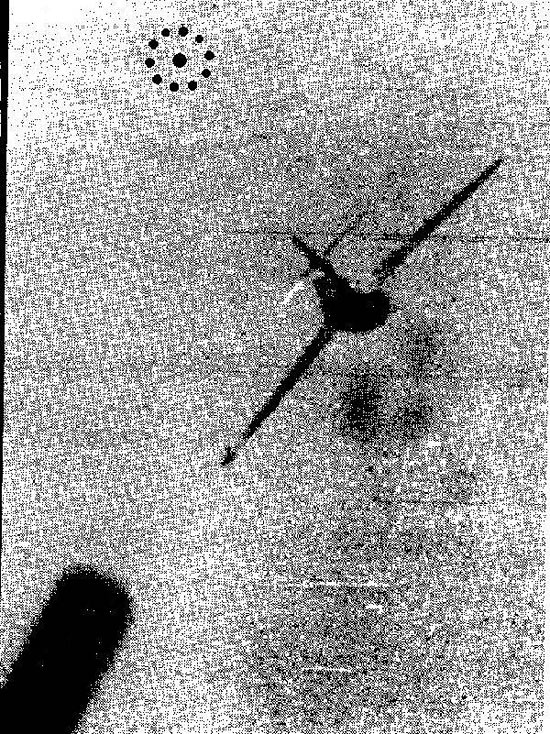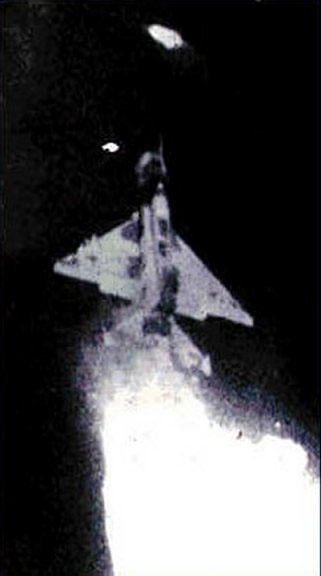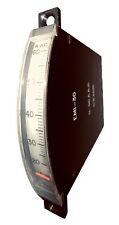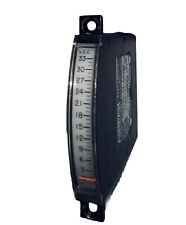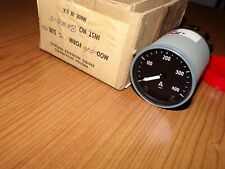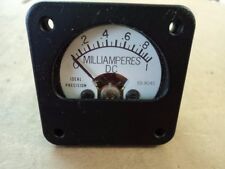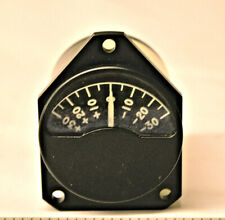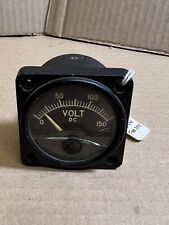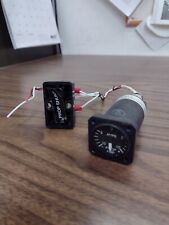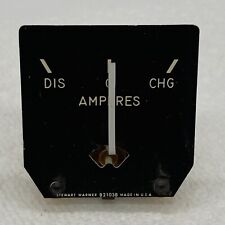The Director Sight and How to Use It
Well…if that is the case, then I had better tell you what those similarities are…right??
OK!! Fair enough!! The most obvious similarity is that the director aiming symbol is displaced away from the gun line. The next similarity is that the director system uses a range input…usually radar…some, like Flanker 2, may also use a Laser/IR tracking system. And last…the director system needs settling time to minimize radar tracking errors.
End of story. Past this point, everything is different. Really different.
Here it is again in a nutshell. Disturbed sight systems attempt to show you the past…bullet behavior one TOF ago. Director systems attempt to show you the future…bullet behavior one TOF from now.
As you can easily recognize, this is not insignificant.
Let’s expand the explanation of a director system some more. Director systems display a sight picture that says this, “If you pull the trigger now, you will hit the target”. This means the bullet fired now will hit the target after one TOF. Inquiring minds might ask…”Just how does the director system know what’s going to happen in the future?”
The answer lays in one major assumption…the target is going to keep on doing what it is doing for the next few moments.
To explain this, let’s use the following example. We’ll start with a situation where we are tracking a target. We are in plane with the gun line at the correct lead point. Here is a drawing of the basic gunnery solution.

Let’s return to our initial discussion of gun ballistics. This drawing represents the solution…the ONLY solution. Any additional aiming references that we include in the basic HUD picture only serve to simplify the aiming problem. Regardless of what type aiming references these are, they do NOT change the basic ballistics. The point that I am trying to make is this. The disturbed reticle sight is not ‘better’ than the fixed sight, and the director sight is not ‘better’ than the disturbed reticle sight. The fixed, disturbed reticle, and director symbology are just different ways of showing the pilot what the basic gunnery solution LOOKS like. Advanced sight types may be easier to use, but they are not more accurate.
Let’s redraw Figure 57 and now include a pipper over the target. This new picture can be either a disturbed reticle sight or director sight display.
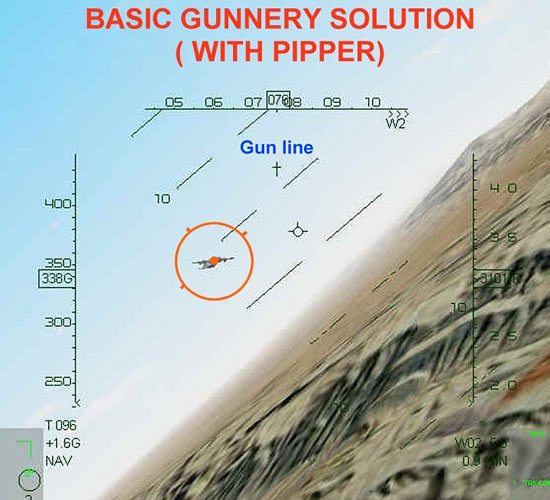
If it is seen as a disturbed reticle sight display, then the picture is saying, “If you had fired one TOF ago, the rounds would be impacting the target now.” What does this display say about what will happen if you fire now? Not much. The disturbed reticle theory predicts that if your flight path does not change, you will hit the target if you fire now…assuming the target is still under the pipper. But, since the disturbed reticle sight is not computing target position, it has no way of knowing where the target will be. So, this display is a nice picture of what might have been, but as far as what may happen if you fire now, it’s a pure guess.
What is the director display saying to you? Simply, that if you fire now, the target will be hit one TOF from now. Does this sound like the director sight is trying to predict the future? Yes. That is exactly what it is trying to do. It does this by taking advantage of its radar lock on. The sight computer gets target flight path data…speed, direction, turn rate, closure…and puts all of this together to predict a future target position. How far into the future? One TOF. It then generates a pipper display that is a steering command to get you to point the gun at this predicted point in space.
The bottom line is that regardless of the sight type, the gun is still pointed at the same point in the sky to hit the target.
As far as the director sight goes, what does all this mean? To put it bluntly, it means, ‘What you see is what you get.’ Put the pipper on the target, fire, and you’re a hero. That’s how it is supposed to work. Could we be so lucky? Probably. Especially as long as the following conditions apply.
- The target does not change its flight path after we pull the trigger. (If it does, all bets are off.)
- The sight has enough settling time to reliably compute a valid solution.
Fortunately, given typically short TOFs, these conditions are not unrealistic. Director sights are very lethal. You want yours to be equally lethal in your sim. Let’s talk about how to do that.


